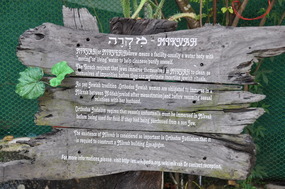 CANDIDA. Today we were on our own. Tom, Missy, Rolf and Leah traveled north and east to visit Leah’s first orphanage. There was a lot of debate about whether to go or not. It meant a second long day of lots of driving, four hours each way. But in the end it was worth it. The sisters who ran the orphanage were so excited to see Leah. They prepared an huge luncheon and although they knew very little English, the sisters and even the doctor who delivered her, were able to communicate to Leah how much they cared for her.
CANDIDA. Today we were on our own. Tom, Missy, Rolf and Leah traveled north and east to visit Leah’s first orphanage. There was a lot of debate about whether to go or not. It meant a second long day of lots of driving, four hours each way. But in the end it was worth it. The sisters who ran the orphanage were so excited to see Leah. They prepared an huge luncheon and although they knew very little English, the sisters and even the doctor who delivered her, were able to communicate to Leah how much they cared for her.
While they were off. Brian, Kalianni, Isabel and I spent the day touring historic Fort Cochin. Our first stop was Jew Town, the Pardesi Synagogue and the Spice Market. Jew Town is not far from our hotel, but we took an auto-rickshaw. Auto-rickshaws are called Tut-tuts in Kochi, a reference to the tut-tut sound they make puttering along.
Having done a bit of research before the trip, we refused the Tut-Tut drivers’ offers of a guided tour and set off. Three groups of Jews settled in India: the Bene Isreal predominantly who immigrated to Mumbai around 175 BCE, the Bagdadi in Kolkata and Mumbai who followed the spice routes in the 18th century, and the Cochin Jews. The history of the Cochin Jews is a bit fuzzy. Originally, they settled in Cranganore north of Kochi on the Malabar Coast. Local Jewish tradition has them arriving around 75 CE. However, historians argue that it may have been several hundred years later. Either way, they moved to Fort Cochin in the 1500s when the Moors invaded and destroyed their homes and they were expelled by the Portuguese rulers. The Paradesi  Synagogue was constructed in 1568, partially destroyed in 1662 and rebuilt in 1664.
Synagogue was constructed in 1568, partially destroyed in 1662 and rebuilt in 1664.
The synagogue is open to visitors. However, there are no tours or photographs allowed. The sanctuary is one rather small room with central pulpit and a balcony for the women. The floor is covered with handmade blue and white tiles. Traditional Kerala lamps of various designs hang from the ceiling. The Jewish community in Fort Cochin was never very large and many left for Israel once immigration was available. We were lucky enough to talk to a congregant. Currently, the synagogue has 10 members, 5 families!!! For high holidays, the Kochi Chabad Chapter helps to provide a minyon.
With such a small Jewish population, only a few shops carry Judaica. We did make some purchases. Looking at the receipt we had to chuckle. The store address sounded made up: IV/542 Synagogue Lane, Jew Town, Fort Cochin.
In the afternoon, we visited one of the Chinese fishing nets. It was fun. We were allowed to climb onto the narrow dock that supports the nets. Huge structures raise and lower the nets into the water via a counter-weight system. The fisherman never actually leave harbor!
That afternoon, the girls went swimming at the hotel next door. When Brian left the pool he noticed a small sign with Hebrew letters. Investigating he discovered that the hotel was originally the home of one of Fort Cochin’s prominent Jewish families, the Koders. The sign explained that the stairs leading to the pool below were a mikvah!
That night we dined at the Menorah House in the Koder Hotel. My Indian food and the girls pasta was excellent.
For more stories visit http://www.travelpod.com/travelblogs-find/anycountry/worldmap/tpod.html
Leave a Reply